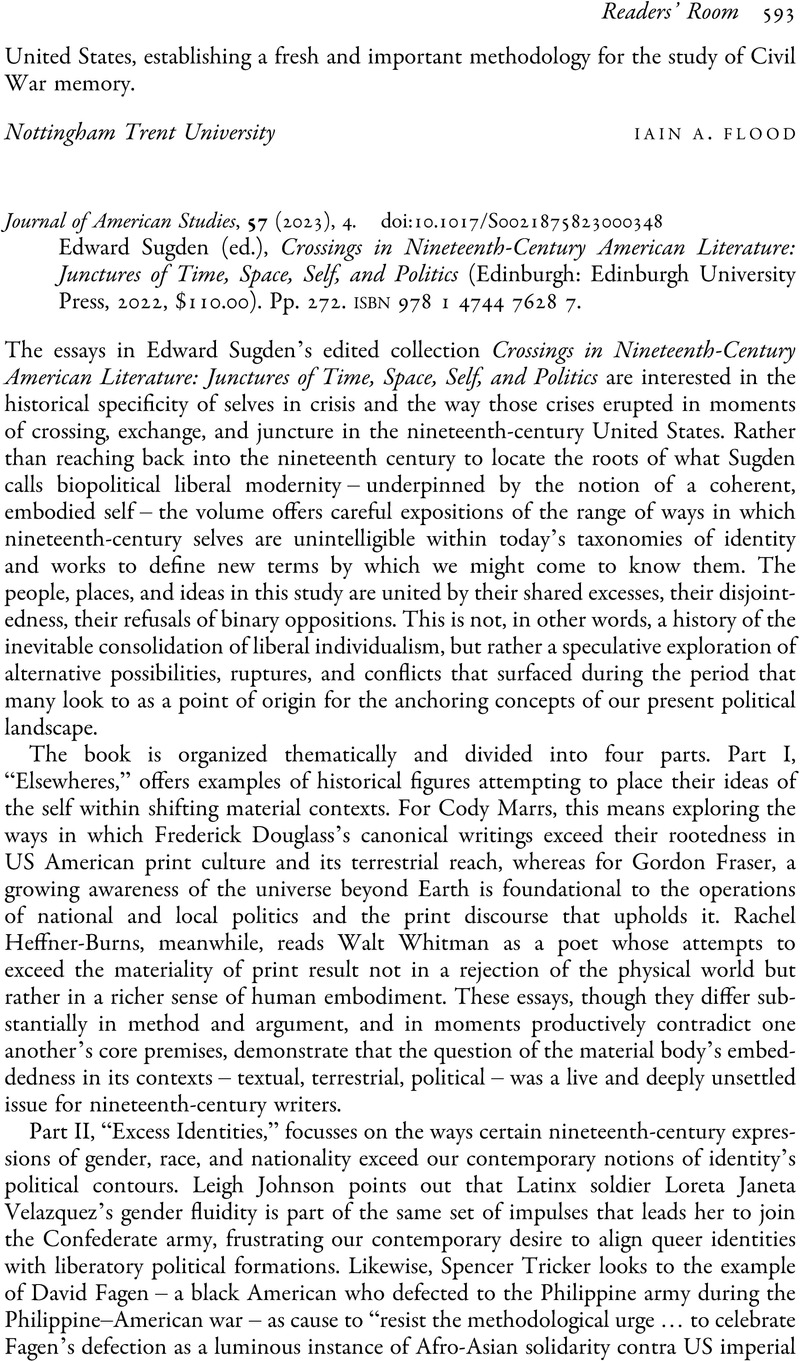No CrossRef data available.
Article contents
Edward Sugden (ed.), Crossings in Nineteenth-Century American Literature: Junctures of Time, Space, Self, and Politics (Edinburgh: Edinburgh University Press, 2022, $110.00). Pp. 272. isbn 978 1 4744 7628 7.
Review products
Edward Sugden (ed.), Crossings in Nineteenth-Century American Literature: Junctures of Time, Space, Self, and Politics (Edinburgh: Edinburgh University Press, 2022, $110.00). Pp. 272. isbn 978 1 4744 7628 7.
Published online by Cambridge University Press: 22 November 2023
Abstract
An abstract is not available for this content so a preview has been provided. Please use the Get access link above for information on how to access this content.

- Type
- Readers’ Room
- Information
- Copyright
- Copyright © The Author(s), 2023. Published by Cambridge University Press in association with the British Association for American Studies



